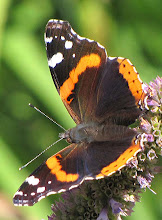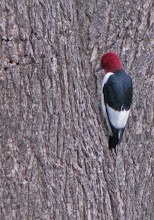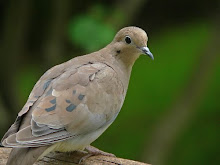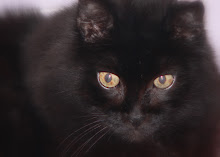tired and cranky when I finally got up. Fed the cats and Hocus promptly threw up his breakfast on the kitchen floor. Stop everything and clean that up. Running behind, open the kitchen door and the knob comes off in my hand. Waste precious minutes trying to fit it back on the door, no luck, gotta go. Start the car and remember I forgot my purse inside. Back to the house but I can't get in, broken door will not unlock. Climbed through the dining room window... glad nobody could see that. Grabbed my purse, still can't get the kitchen door open. Out the dining room window and back to the car. Looks like a stain on my shirt sleeve from the window frame. Have to find a new door knob at Home Depot on the way home.

Guess tonight I'll learn how to install a door knob, but right now, I'm not going to think about it anymore.
Khlem Arboretum had a plant sale early in the spring. Mostly hostas, daylilies and the more common perennials. I managed to pick up a couple things, a Fireworks Solidago, a couple more Virginia Bluebells and a NOID marked Brown Eyed Susan. The BES interested me, it wasn't Goldstrum or Rudbeckia hirta or anything I'd ever grown before. The elderly lady standing beside the plants told me sincerely that I would like it.

Months pass, the BES is healthy and growing but still not blooming. By the edn of July, it's three feet tall, well branched and starting to tip so I have to stake it. Finally it blooms. She's right, I do like it. I really like it.

It must be Rudbeckia triloba, which may be a short lived perennial but more likely an annual or a biennial, depending on which site you use to ID it. It covers itself in little brown-eyed golden flowers with rounded petals. Very charming. It is sometimes called a branched coneflower and according to web sites is later and longer blooming than Goldstrum. Only one reference to it in trade and that is for the cultivar Prairie Glow.

It should have been pinched or cut back in June to create a shorter, fuller plant that didn't need to be staked, but of course I didn't know that in June. According to books and Internet sites it self sows, but nothing self sows in my garden so I can't depend on that. I'll either have to winter sow or repeat the indoor seed starting disaster of 2009. Winter sowing seems my best option since it probably won't bloom that first year anyway.
I'm sure some of you gardeners have grown this plant. Is it indeed biennial? Please let me know if you have experience with it.

But the flower leaned aside
And thought of naught to say,
And morning found the breeze
A hundred miles away.
~ Robert Frost
NOTE: It seems that my little nuisance spam poster is still managing to post comments on my site so I will have to go to plan B and use word verification again.
Thanks
Marnie
And thought of naught to say,
And morning found the breeze
A hundred miles away.
~ Robert Frost
NOTE: It seems that my little nuisance spam poster is still managing to post comments on my site so I will have to go to plan B and use word verification again.
Thanks
Marnie
































































































































